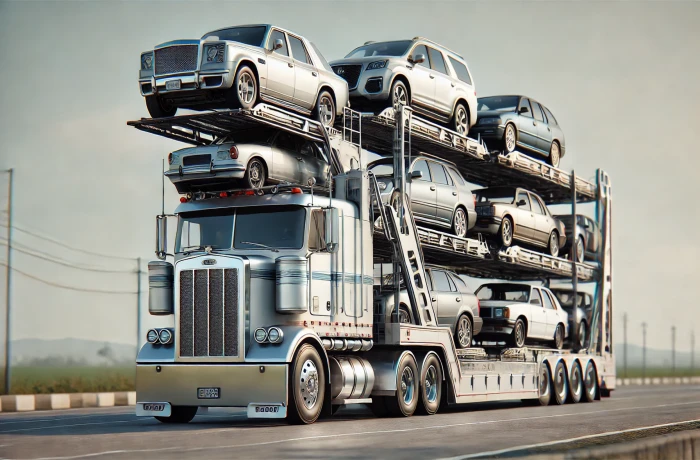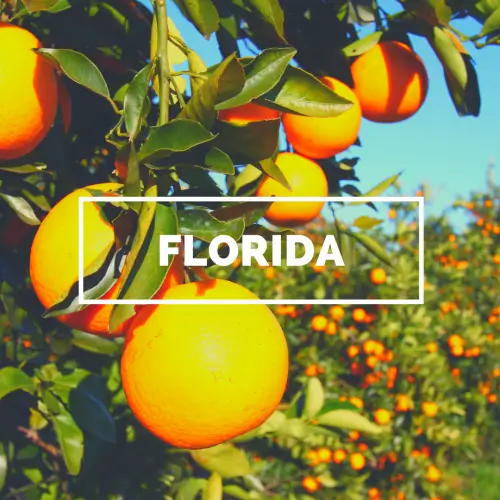Is Top Load the Safest Classic Car Transport Option?

Lila Claybourne
Sep 23, 2024

Top Load: The Safest Method for Classic Car Transport?
For classic car enthusiasts, transporting a prized vehicle can be a nerve-wracking experience. Classic cars are not just vehicles; they’re investments, sentimental objects, and rare pieces of history. Whether moving a car to a show or a new home, safe transport is paramount. One popular transport option that many owners choose is top load. But is it really the safest way to transport your classic car? In this article, we’ll explore what top load transport entails, how it compares to other options, and why it may be the best choice for your classic car.
What is Top Load Car Transport?
In auto transport, there are two primary loading positions when vehicles are transported on multi-car carriers: top load and bottom load.
Top Load: As the name suggests, your vehicle is loaded on the upper deck of the transport carrier. This is typically above other vehicles if it's an open carrier, or simply on the topmost platform in an enclosed carrier.
Bottom Load: The vehicle is placed on the lower deck, directly exposed to road conditions and closer to the ground.
Many carriers have dual-level loading, and vehicles transported on the top deck often enjoy a better position, making it the preferred choice for classic car owners.
Why is Top Load Considered Safer for Classic Cars?
There are several important reasons why top load transport is typically safer for classic cars:
Protection from Road Debris
Cars placed on the top deck are significantly less exposed to road debris, such as rocks, gravel, or other particles kicked up from the road. On a lower deck, vehicles are much more vulnerable to being hit by debris, which can cause dents, scratches, or damage to the paint.
Reduced Risk of Fluid Leaks
When cars are placed on the bottom deck, there’s always a risk that fluids from the vehicles above can leak down. These fluids (oil, coolant, brake fluid) could damage the exterior or even cause corrosion to certain parts of your classic car.
Top load eliminates this issue since no cars are positioned above your vehicle.
Stability During Transit
Vehicles on the upper deck experience less vibration and movement during transport. The bottom deck is closer to the road, and the constant vibration can be more noticeable there. Classic cars, often equipped with delicate parts or older components, benefit from the extra stability provided by top load positioning.
Better Weight Distribution
Trucks that load heavier vehicles on the bottom deck and lighter cars on the top have a balanced weight distribution, ensuring a smoother ride for vehicles on the top. Classic cars, which may not weigh as much as modern SUVs or trucks, are usually placed on the top deck, making them less susceptible to being jostled during transit.
Prevention of Weather-Related Damage
While this point is more relevant to open carriers, cars on the bottom deck can sometimes be more exposed to dust, rain, or snow that can collect underneath bridges or from passing vehicles. Top load positions your car higher, reducing the chance of this kind of exposure.
Cost of Top Load Car Shipping
One of the most common questions car owners ask when considering top load car transport is, "How much will it cost?" The price of top load shipping can vary depending on several factors, and it is typically more expensive than bottom load shipping for a number of reasons.
Here are the key factors that affect the cost of top load car shipping:
Premium Placement on the Carrier
Top load spaces are often in higher demand, especially among owners of classic or luxury vehicles. Because fewer cars can be placed on the top deck and there’s a preference for this placement, transport companies charge a premium for top load service. This premium can increase the overall cost of shipping by around $100 to $200 compared to bottom load transport.
Type of Transport: Open vs. Enclosed
Enclosed transport, which provides a fully covered transport environment, typically costs 80% more than open transport. Since enclosed carriers offer extra protection from weather and debris, classic car owners may want to choose this option in addition to top load for the best protection. Expect to pay anywhere from $400 to $500 for enclosed top load shipping, depending on the distance.
Open transport, while less costly, still offers the option for top load placement. Open transport typically costs around $100 to $200 depending on the route and the transport company.
Distance of the Shipment
Long-distance shipping typically costs more, and the further you need your classic car to be transported, the higher the overall price. For example, cross-country top load shipping can range from $400 to $500, while shorter trips might cost between $200 and $300.
Seasonality and Availability
The time of year you decide to ship your car can also impact the cost. Peak seasons for car transport, such as summer and early fall, generally result in higher prices due to demand. Booking in the off-season or during slower periods may help reduce the cost of top load shipping. However, because top load spaces are limited, it’s always a good idea to book early to secure your spot, even if it comes at a higher price.
Condition and Size of the Car
If your classic car is particularly large or modified, the size may affect the total cost of transport. Larger or heavier vehicles may require more space and resources, which can lead to higher shipping costs. If the vehicle is inoperable, there may be additional fees, as special equipment is needed to load and unload the car.
When Top Load Might Not Be Safer
While top load transport is generally considered safer, there are rare situations where it might not be the best option:
Height Restrictions
Clearance issues can sometimes arise when a car is loaded on the top deck, particularly in areas with bridges or tunnels that have lower height limits. This is especially true if your classic car has been modified with additional height or a custom roof.
In such cases, it is critical to work with a transport company that is aware of the height restrictions along the transport route and will ensure that your vehicle will not encounter any issues.
Harsh Weather Conditions
Even though top load vehicles are generally protected from debris and other cars, they are still more exposed to the elements in an open carrier. Severe weather, such as hail or extreme sun exposure, can cause damage. For this reason, an enclosed carrier is always recommended for highly valuable or delicate classic cars, whether they are top-loaded or bottom-loaded.
Other Key Safety Measures for Classic Car Transport
Beyond the choice of top or bottom load, there are additional safety measures to consider when transporting a classic car:
Enclosed Transport vs. Open Transport
Enclosed carriers provide complete protection from weather, road debris, and other hazards. Although more expensive, this method is highly recommended for classic cars. Whether the car is on the top or bottom, enclosed transport will ensure it arrives in pristine condition.
Open carriers, on the other hand, offer less protection but are more affordable. If you choose this option, top load will minimize the risks to your vehicle.
Properly Securing the Vehicle
Classic cars must be securely tied down during transport. High-quality straps and wheel nets are used to prevent movement. Ensure that the company uses soft straps or nylon ropes to avoid damaging the exterior or undercarriage of your car.
Insurance Coverage
It’s vital to ensure that the transport company has an active cargo insurance policy. Classic cars are valuable, and insurance is a critical safety measure to protect your investment.
Pre-Transport Inspection
Most reputable transport companies, like AmeriFreight, will offer a pre-transport inspection, documenting the condition of your car before loading. This helps you have peace of mind and provides a reference in case of any damage claims.
Conclusion: Choose Top Load Transport for Maximum Classic Car Safety
When it comes to transporting a classic car, top load offers clear safety advantages over bottom load in terms of protection from road debris, fluid leaks, and better stability. However, classic car owners must also consider other transport factors such as enclosed vs. open transport and insurance coverage to ensure their vehicle is handled with care.
For classic car owners, choosing a reputable auto transport company like AmeriFreight ensures that your car is in the hands of experts who prioritize safety. Top load is an excellent choice, but working with experienced professionals who understand the unique value of classic cars is essential to guarantee peace of mind throughout the transport process.
For a free, instant quote to safely transport your classic car with top load or enclosed transport options, visit AmeriFreight.
FAQs About Top Load Classic Car Transport
Is top load transport more expensive than bottom load?
Yes, top load is generally more expensive due to its perceived safety advantages and limited availability on carriers.
Should I always choose enclosed transport for my classic car?
It’s highly recommended for classic cars, as enclosed transport offers superior protection from the elements and road hazards.
Can I request top load transport specifically?
Yes, most transport companies allow you to request top load, but it’s important to book in advance since top load spaces are limited.
What happens if my classic car is damaged during transport?
Transport companies like AmeriFreight will ensure that you are partnered with a carrier that is properly insured, and will walk you through the claim process, should damage occur. Always verify insurance coverage before shipping your vehicle.
How long does classic car transport typically take?
Depending on the distance and carrier type, classic car transport can take anywhere from a few days to a couple of weeks.
Related Posts
















